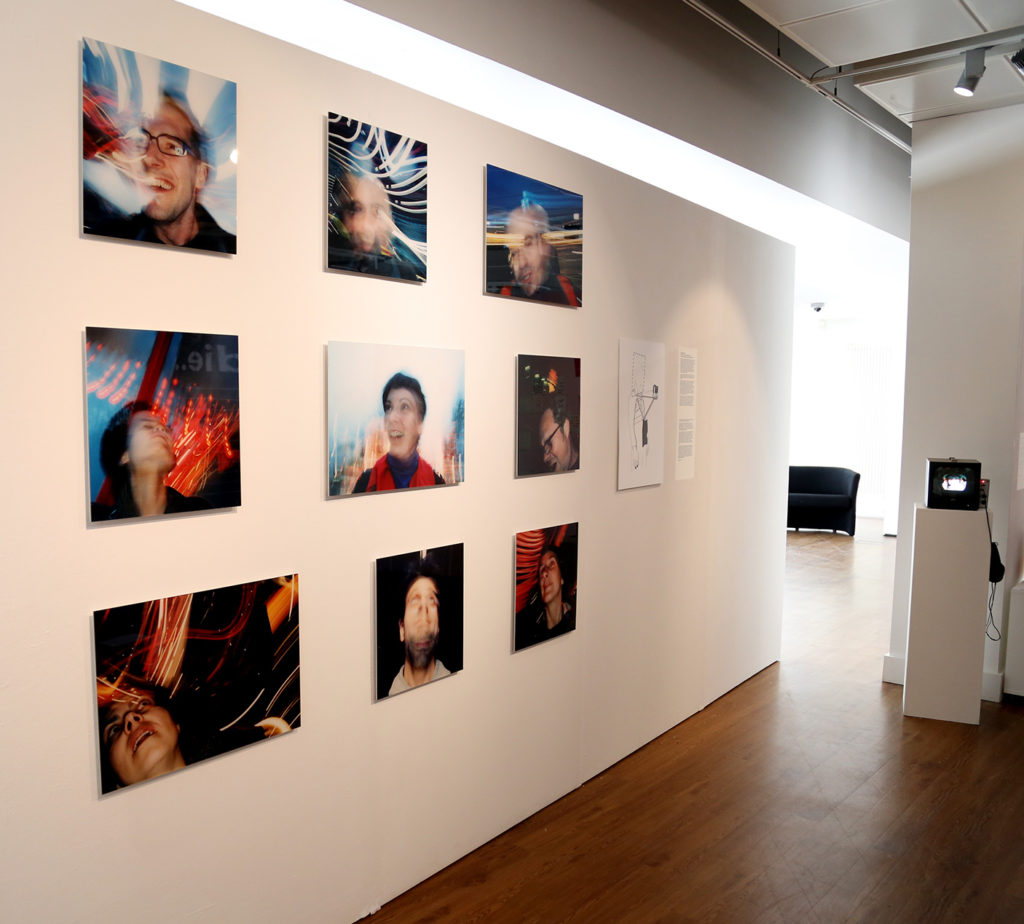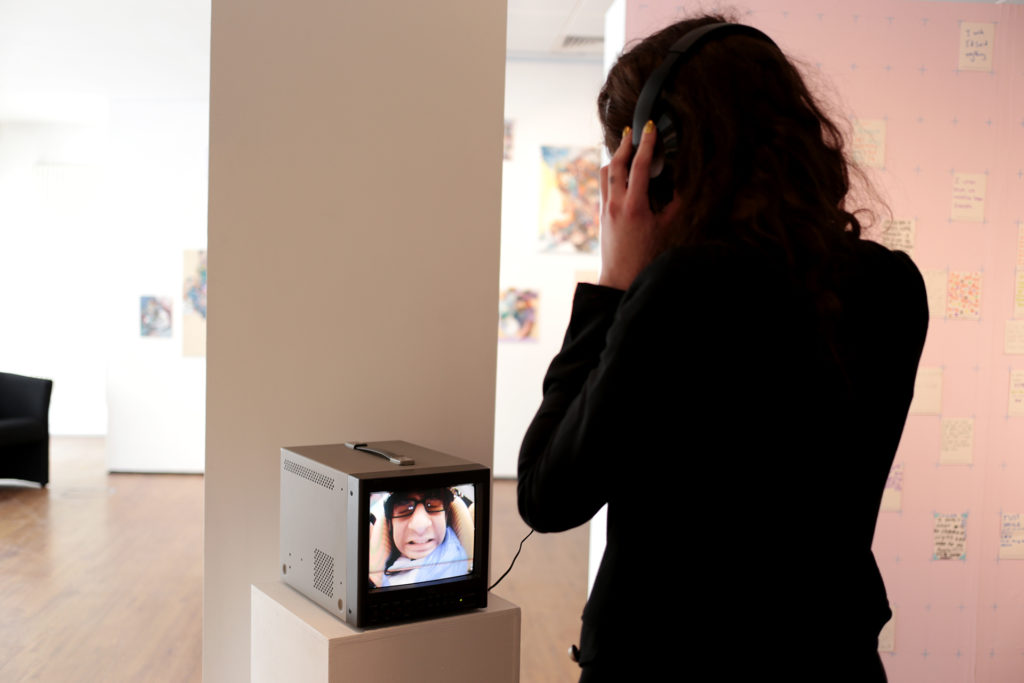Punters: autoportraits of fairground thrill features as part of the group show Everything is Now, at Solent Showcase from 26 April – 11 June 2019 – in collaboration with artist and writer, Stacey Heale. Other featured artists include Candy Chang, Greg Gilbert, Stacey Heale, The Fandangoe Kid, Life.Death.Whatever. For those who can’t attend, I wrote some text for the show, which I’d like to share with you here.

Fifteen years ago, I started to interview people about their own personal thrilling experience – this included a broad range of experiences, from a cross dresser taking their first walk in public, to a teenager surviving a fall through the ice. Borrowing techniques from ethno-criminology I broke these interviews down, hoping to discover the precise moment of transformative thrill. I wanted to understand what motivated people through a sequence of events – events which they often constructed themselves – towards and through that thrilling moment. To some viewers, such a sequence of events can appear to be psychologically traumatic, horrific and often incomprehensible. To others they can appear hugely exciting and alluring.

My own motivation as an artist and designer was to learn how I might engineer new thrilling experiences, not only for participants, but also for spectators who might witness and experience these transformations vicariously.
One comment was common to many of my interviews, regardless of the context: “I never felt so alive”. To be thrilled is to feel alive. There is a physiological transformation as the body’s autonomic system is activated, and adrenaline flows through the veins to excite biological systems. This flow is accompanied by a burst of dopamine to the brain and a euphoric high. Emotional states are chemically transformed. Forty-three muscles in the face contort to express these emotional transformations, which other humans – and animals – are programmed to recognise and respond to. Thrill has evolved as a most basic animal mechanism to reward the persistence not only of ourselves, but also of our troop, and ultimately our species.
Today, in the western world, many of our basic animal needs are met. There is little danger to evade; we can pick up a loaf of bread from the shop; we can drink water from a tap; we can find sex on Tinder. Yet the very mechanisms put in place to keep us alive, can also make us feel dead. To fill this void, individuals learn, adapt and hone thrill seeking behaviour. We are all thrill engineers, but each individual is different. Proclivities, philias, phobias, and attitudes towards risk and fear are deeply subjective. The sensation of thrill my grandma got from opening a surprise birthday present appeared to be just as rewarding to her as the thrill an adrenaline junkie might get from sky diving.
The phenomenon of the thrill ride fascinates me in particular. Some chimpanzee troops have learned to fell trees, which they ride to the ground for pleasure. The same sticky, sweaty pores on the palms of their hands and feet, which – when activated by thrill – helped them to swing from danger, chase prey, or hold a mate, also allows them to hang on to their perfectly engineered thrill ride.

Humans are no different. Hand-in-hand with the evolution of safe urban living has come the evolution of amusement parks and rides. These sprawling engineering complexes house collections of machines whose efficiency can be measured in terms of the magnitude and frequency of transformative experiences that they can deliver to the wide variety of humans that they process along their winding production lines. My video Ride Virgin (2007) shows one of these machines – Oblivion – in operation in one of these complexes – Alton Towers –processing one human. Alton Towers will deliver 1/4 billion thrilling moments this year alone.
In the series Punters: auto-portraits of fairground thrill (2006) I present snapshots of individual emotional experience in flux. My portrait machine monitors the sweat response of riders as they hang onto their ride. The shutter and flash of an analogue film camera are triggered at the peak moment of rider-arousal. By creating this machine, I had hoped to capture the precise moment of transformation. I feel that I failed, yet the array of emotions my riders communicate to the viewer, who are now voyeurs of this private moment, has made me appreciate the complexity and deeply subjective nature of thrill, and its relationship to trauma, and other darker emotional states.
I continue to hunt.
